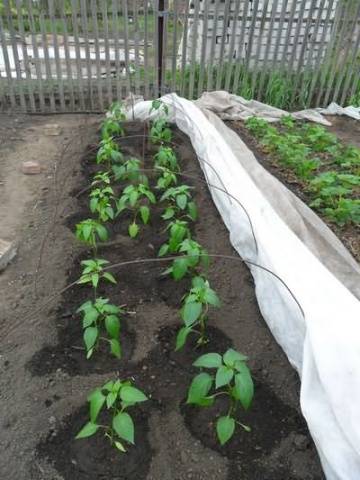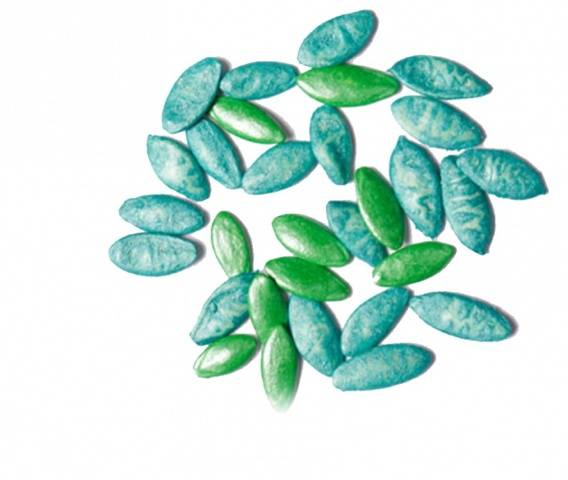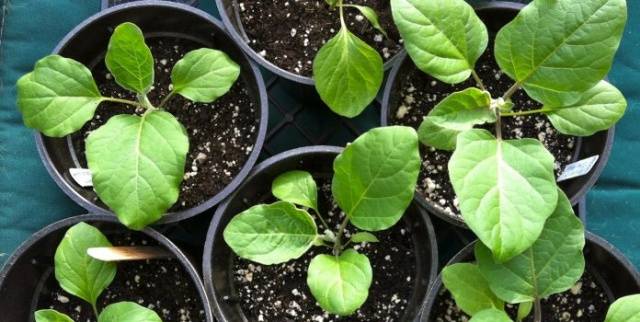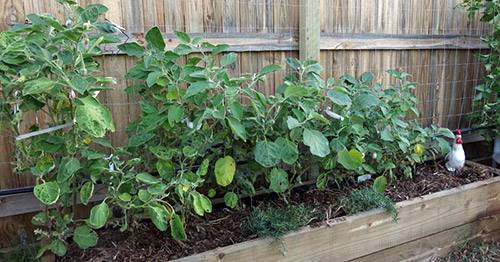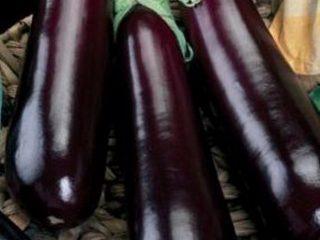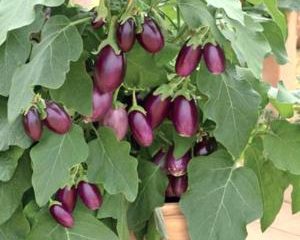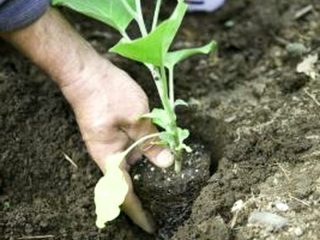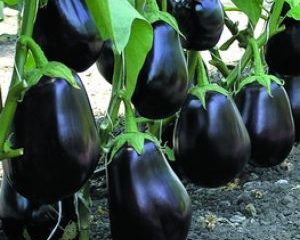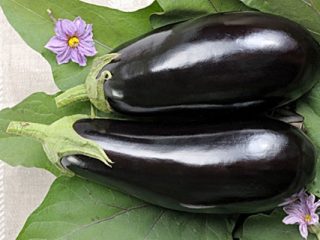Content
In the Urals, eggplant is cultivated as an annual plant, although it was “supposed” to be perennial. But for several years, eggplant can afford to grow in its warm homeland, and not in cold Russia. If you count how many garden crops require special conditions due to their origin from the warm southern regions, then the question naturally arises: “what would vegetarians eat in northern countries if several thousand years ago humanity had not domesticated practically inedible plants?” But fortunately for us, the plants were cultivated.
For quite a long time, eggplant has been classified as a conditionally edible plant due to its high solanine content. In Soviet times, if there was only one in the assortment eggplant varieties “Almaz” and when they arrived at the store either overripe or had been stored for too long, the culinary recipes of the former Soviet Union firmly included the requirement that before eating eggplants, peel the skin and boil for some time to remove the bitterness. In addition, the northern regions could only use purchased eggplants. There could be no talk of any cultivation of this garden crop in the Trans-Urals.
Nowadays everything has changed. Eggplant varieties have already been developed that not only do not contain solanine, but are also capable of growing beyond the Urals even in open ground, although until now only experienced gardeners have taken the risk of growing eggplants in this area.
To grow in the Urals region, you have to avoid late-ripening varieties that will not have time to grow, choosing suitable varieties among early or mid-ripening eggplants, taking into account their keeping quality, productivity and your own taste preferences, but also growing them through seedlings. Otherwise, eggplants may not have time to grow to the stage of technical ripeness, during which they are suitable for food.
Selecting seeds and soil for seedlings
It is better not to buy eggplant seeds from the market, as this cannot guarantee their quality and absence of infection. In branded stores that value their reputation, you will be offered high-quality eggplant seeds suitable for your region. By carefully reading the annotation, you can draw certain conclusions yourself about the suitability of a particular eggplant variety for growing on your site.
Often the microclimate of one area is very different from the microclimate of another. This nuance often amazes gardeners themselves: our tomatoes grow well, but our neighbor’s constantly disappear, but there is always nowhere to put the cucumbers. All that remains is to change the harvest. But when you first try to plant certain vegetables, you will have to select everything empirically. Eggplants are no exception.
It is best to buy soil for eggplant seedlings in a store.A ready-made mixture intended for eggplants usually has optimal indicators for acidity, air permeability, density, and water permeability.
Growing seedlings
Choosing a time when you can plant eggplants for seedlings in the Urals, we must remember about the frequent return frosts in this region. Typically, eggplant seedlings are planted in a permanent location from the last week of May to mid-June. Since eggplants grow very slowly in the first half of the growing season, seeds for seedlings are sown from the end of February to mid-March.
Preparing eggplant seeds
The germination rate of such seeds is higher than that of annual seeds, and biennial seeds also germinate faster.
Before sowing seeds in the ground, it is necessary to disinfect them and stimulate growth. To disinfect, the seeds need to be soaked for half an hour in a 2% solution of potassium permanganate. After disinfection, the seeds are soaked for two hours in a mineral solution.
If you bought pelleted or encrusted seeds, no pre-treatment is required. Such seeds have already been disinfected and nutrients have been added to their shell.
What is the difference between encrusted seeds and panned (granulated) seeds?
Recently, quite a few new ways of treating seeds for better germination have appeared. In stores you can find coated and encrusted seeds, seeds treated with plasma or laser. The last two methods have not yet been worked out, besides, laser treatment makes sense if done no later than 10 days before sowing. It is unlikely that such seeds will appear in retail sales.
Dried
Usually pelleting is carried out with small seeds, making them easier to sow. During this operation, the seeds are coated layer by layer with growth stimulants, microelements, and drugs for disease prevention. The end result is a ball with a seed in the center.
The recently introduced gel pill, the purpose of which is to regulate the flow of water to the seed, did not cause much enthusiasm among many gardeners.
Inlaid
When encrusted, the seeds are covered with a water-soluble coating containing growth stimulants and disinfectants. The seed size remains the same as it was. This operation is performed with large seeds; it has been known to farmers for several decades. As a result of encrustation, the seeds are painted in different colors. Often the manufacturer uses a “branded” color, confirming that the package contains original seeds.
Sowing eggplant seeds
For sowing, you need to first prepare containers of a sufficiently large size. Since eggplants really do not like transplanting, it is better to plant them immediately in separate containers.
After filling the containers with soil, lightly spill the soil and place the eggplant seeds at a depth of 1 to 1.5 cm. Sprinkle with soil and water again.
Some people plant one grain at a time, many prefer to plant two seeds at once and then remove the weak sprout. The second case is a safety net if some of the seeds do not sprout.
After sowing, the seedling containers are covered with film and placed in a room with a temperature of 25-28°. After germination, the film is removed and the temperature is reduced to +17 for two weeks. If the temperature is not lowered, the seedlings will stretch out excessively.Plus, the lower temperature will harden the seedlings. After hardening, you can set the temperature to +27 during the day and 10 degrees lower at night.
Establishing such a regime in the house is a non-trivial task. In the video you can see how an experienced gardener from the Northern Urals gets out of the situation.
Although eggplants love moisture, they cannot tolerate stagnant water. Therefore, eggplant seedlings need watering only after the top layer has dried. The water should be settled and warm. Drainage holes help avoid water stagnation in seedling containers. In pots specially made for seedlings, such holes are provided initially. When using improvised containers for seedlings, such as yogurt cups, cut-off bottles, egg shells, etc., holes must be made before the container is filled with soil.
Caring for eggplant seedlings
Eggplants are light-loving plants. The length of daylight hours for them should be 12 hours, which is impossible in winter in the northern regions. To provide seedlings with normal growth conditions, it is necessary to additionally illuminate them with fluorescent lamps or phyto-lamps specially designed for plants.
For high-quality growing of seedlings, it will be necessary to feed them in the phase of the first leaves and before planting in a permanent place. Usually no more feeding is required, but if the seedlings look lethargic, then additional feeding can be done.
If grown properly, seedlings are ready for transplanting to a permanent location within two months.
But if you planted eggplant seeds in early March, then it may turn out that in May it is still too cool to plant seedlings directly under the open sky, even in a warm bed.
It should be noted that although eggplants are considered southern plants, which in the north can only be grown in greenhouse conditions, in fact in greenhouses they produce green mass instead of fruits, and they bloom and set fruits much better in the open air.
In order to be able to grow eggplants in open beds, but at the same time avoid the danger of freezing, seedlings must be gradually accustomed to cold street air, and it is better to plant them in warm beds under a film cover. With the onset of warm days, the film is removed and the eggplants are left to grow in the fresh air.
With the right agricultural technology, you will harvest your first eggplants in July.
